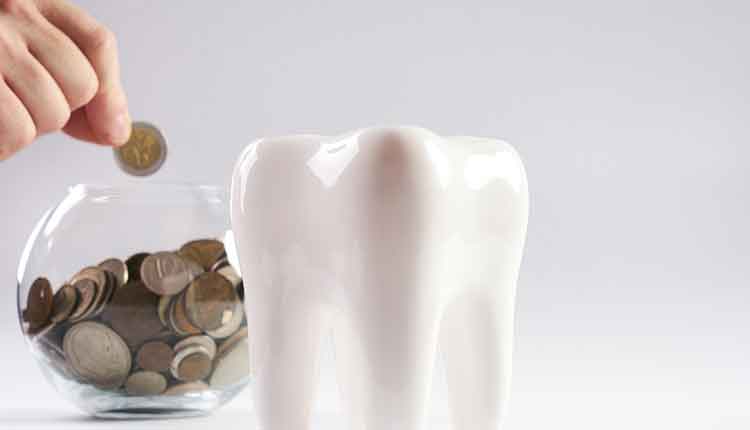
Despite advancements in prevention and health promotion programs, oral diseases and oral health disparities remain significant problems among vulnerable communities in the United States. Vulnerable populations include low-income individuals, ethnic and racial minorities, children, older adults, people experiencing homelessness, incarcerated individuals, those with disabilities or chronic medical conditions, and socially marginalized groups. Health disparities are defined as significant differences in health linked to social and economic disadvantages. Health obstacles faced by vulnerable populations include race and ethnicity, education, socioeconomic status, geographic location, insurance coverage, gender, age, sexual orientation or gender identity, health literacy, and disability status. These barriers are major public health problems in the US.
Photo Credit: diignat / iStock / Getty Images Plus

Addressing Unmet Oral Health Needs
Vulnerable populations face greater barriers to accessing oral care such as unequal distribution of dental resources and living in health professional shortage areas (HPSAs). More than 59 million Americans live in HPSAs, which results in about a third of this population experiencing unmet dental needs. Limited access to care and the connection between oral health and overall health significantly impact the ability to lead a healthy life. Dental caries is the most common and frequently neglected health condition, affecting 90% of those ages 20 to 64 and 50.5% of children ages 6 to 11. Mexican American and non-Hispanic Black individuals and children of low socioeconomic status have the highest caries rate and prevalence of untreated decay compared to non-Hispanic white and nonpoor children. Additionally, periodontal diseases affect 42% of those age 30 and older and nearly 70.1% of those between the ages of 65 and 74. Both dental caries and periodontal diseases are preventable and treatable in their early stages; however, health and healthcare disparities—such as unequal access to preventive oral care and treatment—affect vulnerable populations. Severe consequences of poor oral health and untreated dental caries and periodontal diseases include pain, impaired function, and serious infections. Poor oral health is also associated with diabetes, cardiovascular disease, and other systemic diseases.
Photo Credit: Wavebreakmedia / iStock / Getty Images Plus

Broaden the Scope of Dental Hygienists
The elimination of oral health disparities is a public health need, and broadening the scope of practice for dental hygienists may be part of the solution. In some states, dental hygienists have direct access to patients, practice independently, work in public health, or are in collaborative practice. These clinicians can initiate patient treatment based on assessment and dental hygiene diagnosis without the supervision of a dentist. These new dental hygiene workforce models may decrease oral disease burden. Research using a Dental Hygiene Professional Practice Index has suggested a broader dental hygiene scope of practice positively and significantly impacted oral health outcomes by increased use of oral health services and decreased tooth removal due to decay or disease.
Photo Credit: valentinrussanov / E+

The Reimbursement Piece
The majority of oral healthcare (86%) is financed by private sources such as employment-based dental insurance benefits or out-of-pocket payments by patients. Private insurance reimbursement rates average about 80.5% for children’s dental services and 78.6% for adult dental services. Medicaid fee-for-service reimbursement rates average 49.4% for children’s and 37.2% for adult dental services. This lack of reimbursement further contributes to health disparities because dental coverage is mostly limited to children, reimbursement rates are too low to sustain a dental practice, and bureaucratic barriers for enrollment and services are burdensome. Increasing Medicaid reimbursement rates to 75% and reducing administrative burdens can incentivize dental provider participation and patient use of services. Dental hygienists should stay abreast of current Medicaid reimbursement policies, as 18 states currently allow direct Medicaid reimbursement for dental hygienists. Dental hygienists can use their experience in treating vulnerable populations to communicate with Medicaid officials about proposed payment reforms and regulatory systems.
Photo Credit: geckophotos / iStock / Getty Images Plus

Leading the Charge
Promoting access to oral healthcare is a fundamental ethical principle of the American Dental Hygienists’ Association (ADHA). Dental hygienists can advocate for better health outcomes and improvement of access to care because they have an intimate understanding of oral health needs and are experts in their field. Advocacy can positively influence access to care and public health policy such as the expansion of the dental hygiene scope of practice. There are basic steps that all dental hygienists can use to initiate advocacy and create change.
Photo Credit: scyther5 / iStock / Getty Images Plus

The Legislative Route
Legislative preparation can be as simple as learning about the legislative process, state legislative procedures, and voting history of state senators and representatives. State websites provide information about legislative and budget processes as well as contact information for state legislators and the governor’s office. Also, legislative staff members are available to help answer questions and provide information about state legislation. Start small by choosing to advocate for a community issue, a bill in legislation, a change to the practice act such as dental hygienists administering the flu vaccine, or investigate the ADHA current advocacy efforts for ideas.
Photo Credit: BrianAJackson / iStock / Getty Images Plus

Make a Difference
Initial and continued contact with state legislators via email, phone, letter, or face-to-face contact is crucial for presenting reasons why legislation is needed. An arranged personal visit will provide a greater impact. A key point to remember when presenting information is to be respectful and limit material to 1 page. A fact sheet is an excellent way to present multiple sources of evidence-based literature with a letter. Legislative advocacy efforts require commitment, time, relationship building, and persistence.

